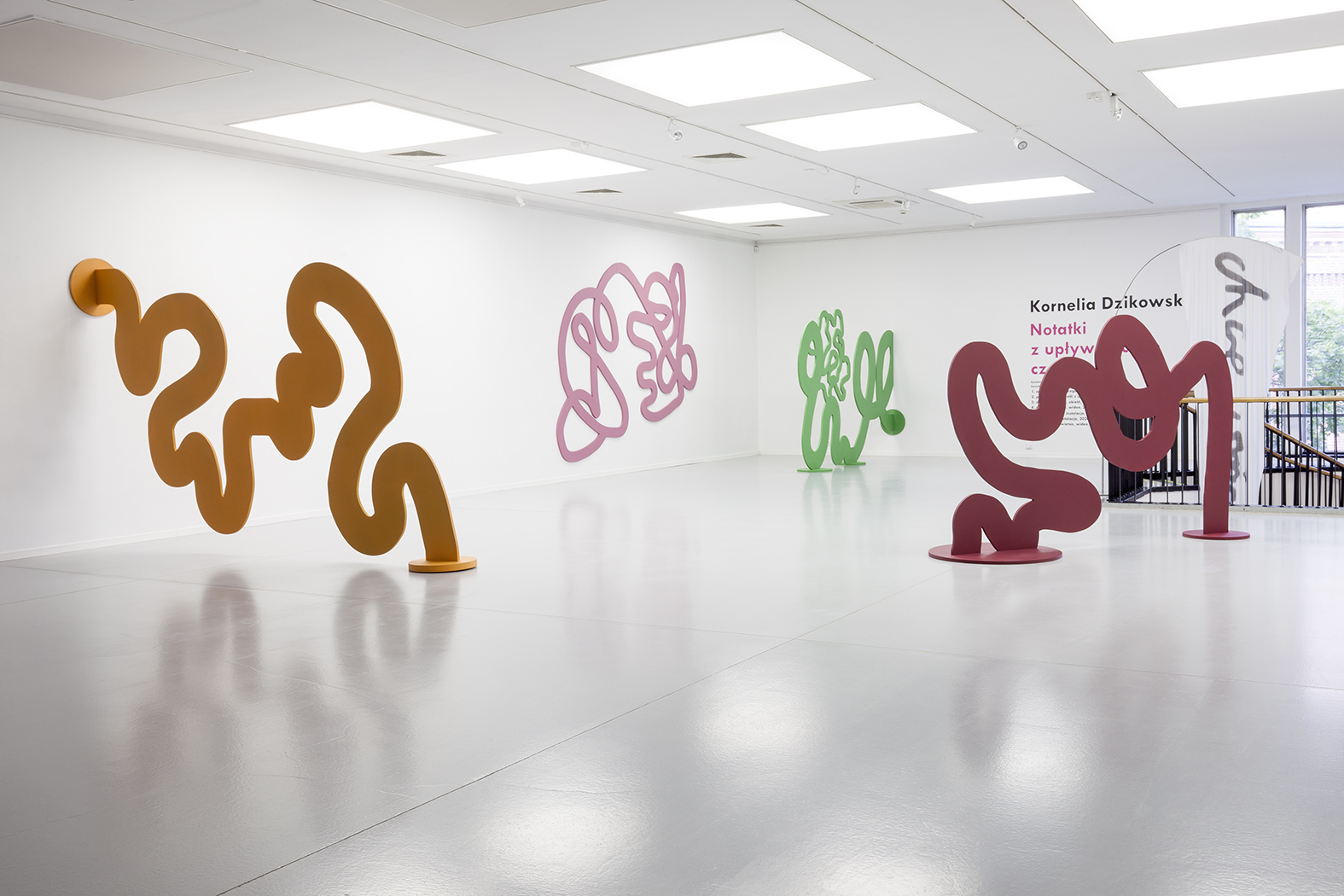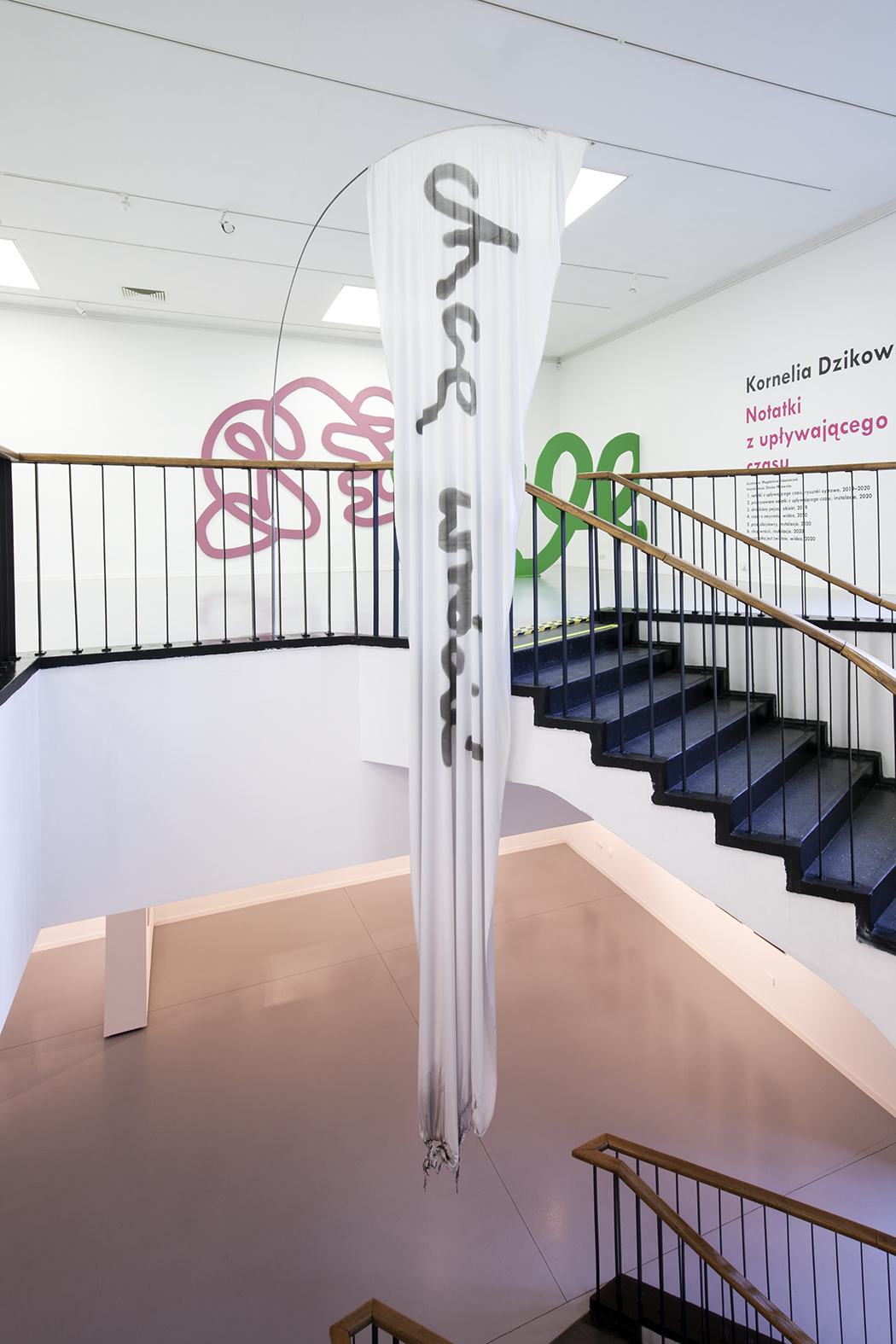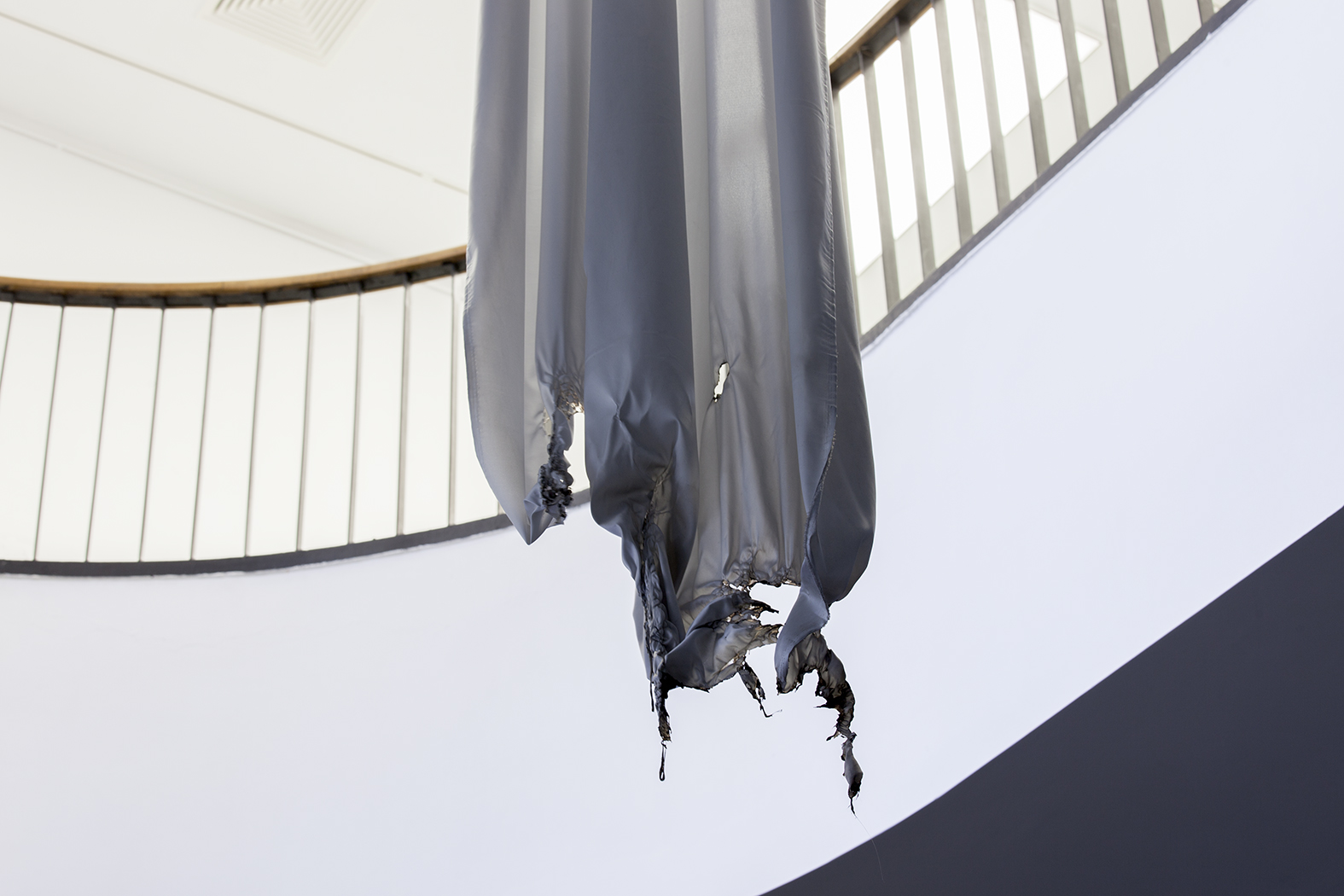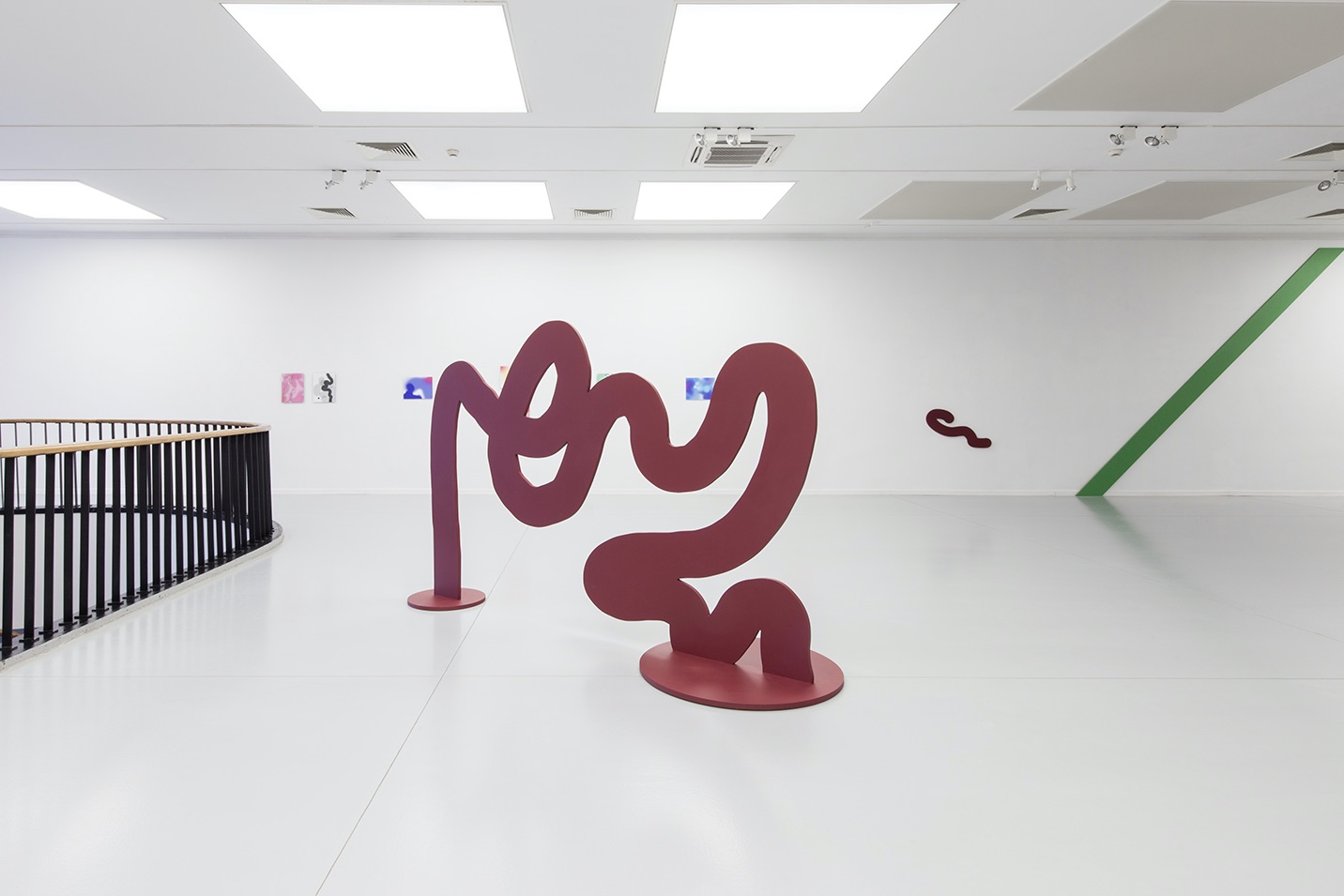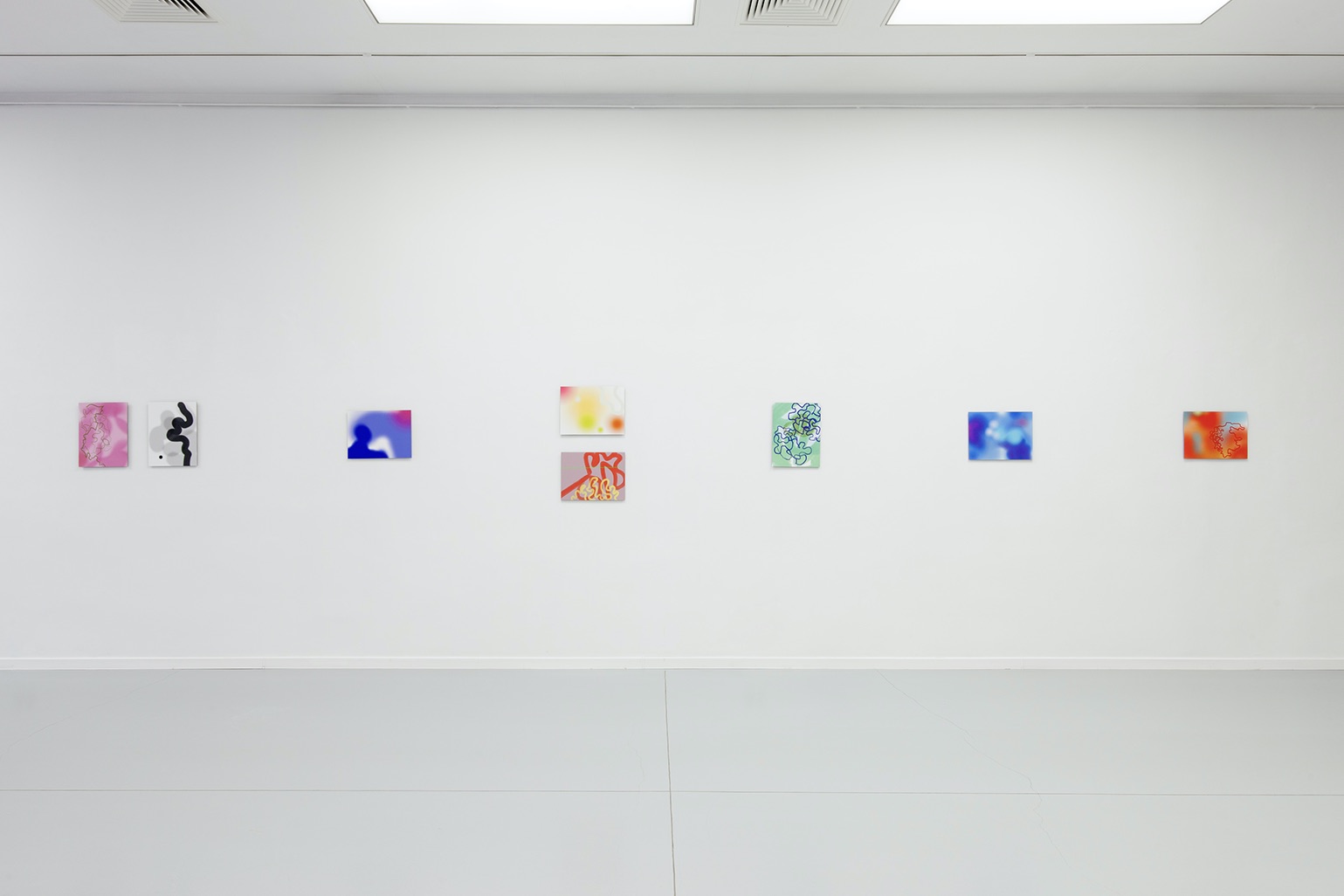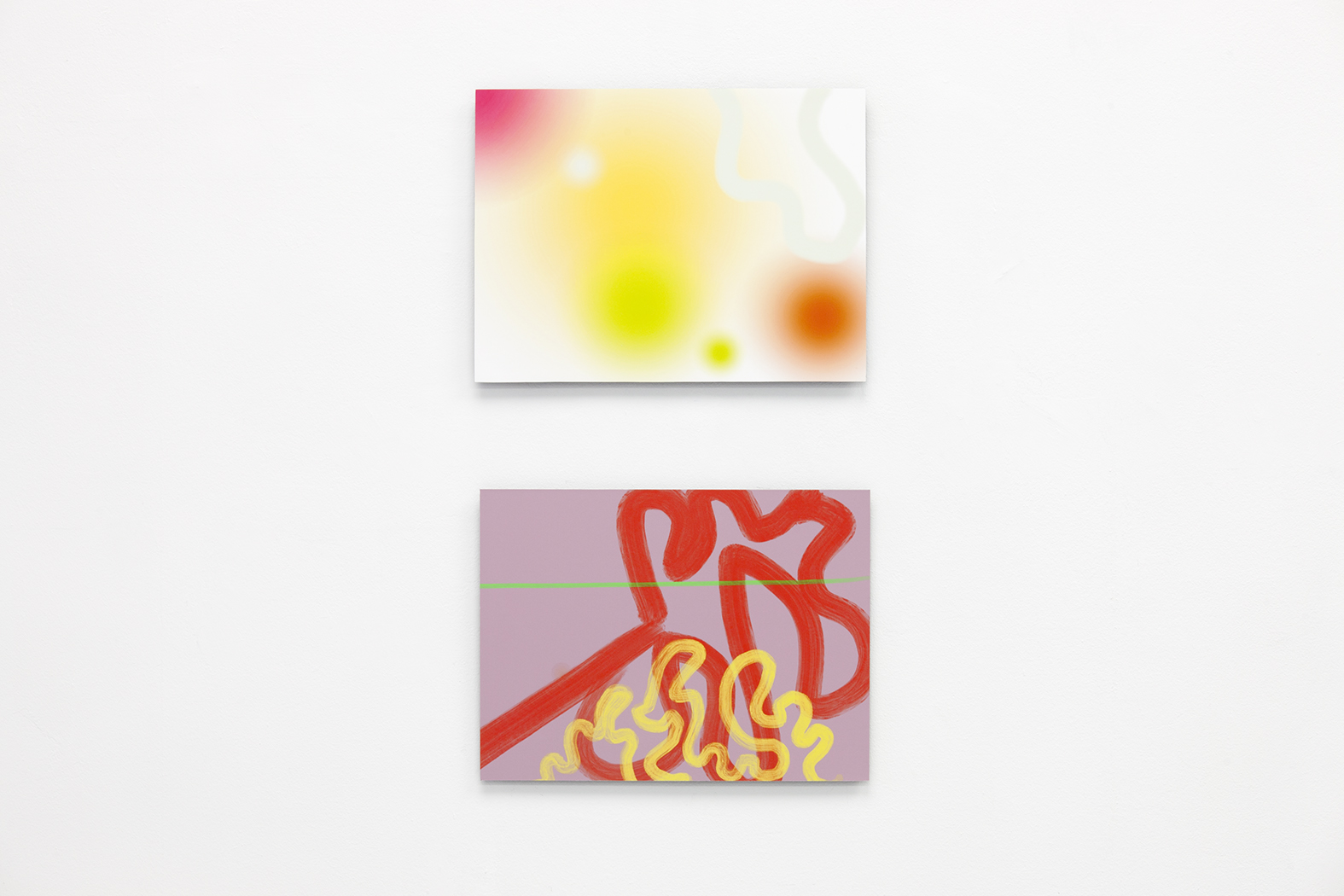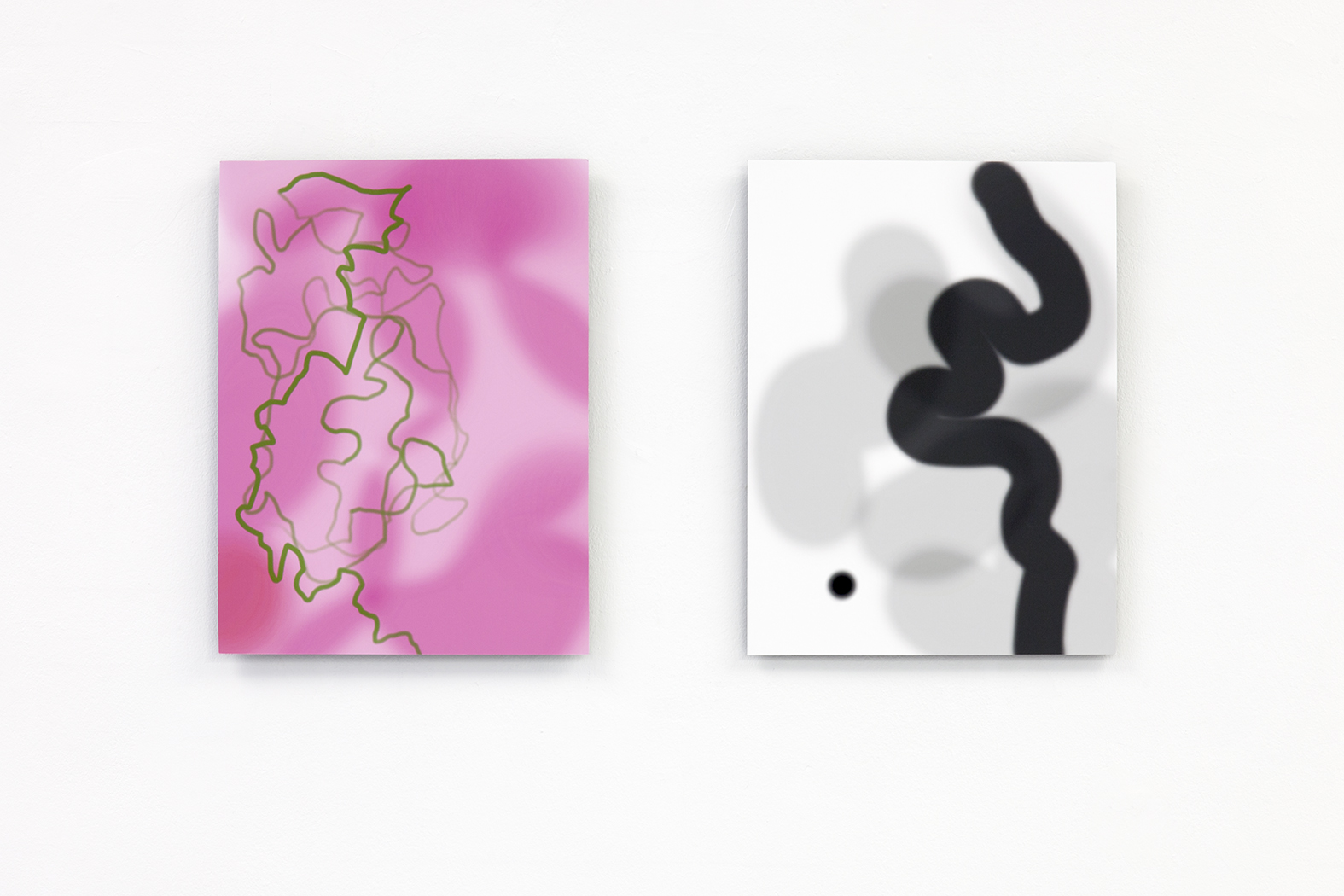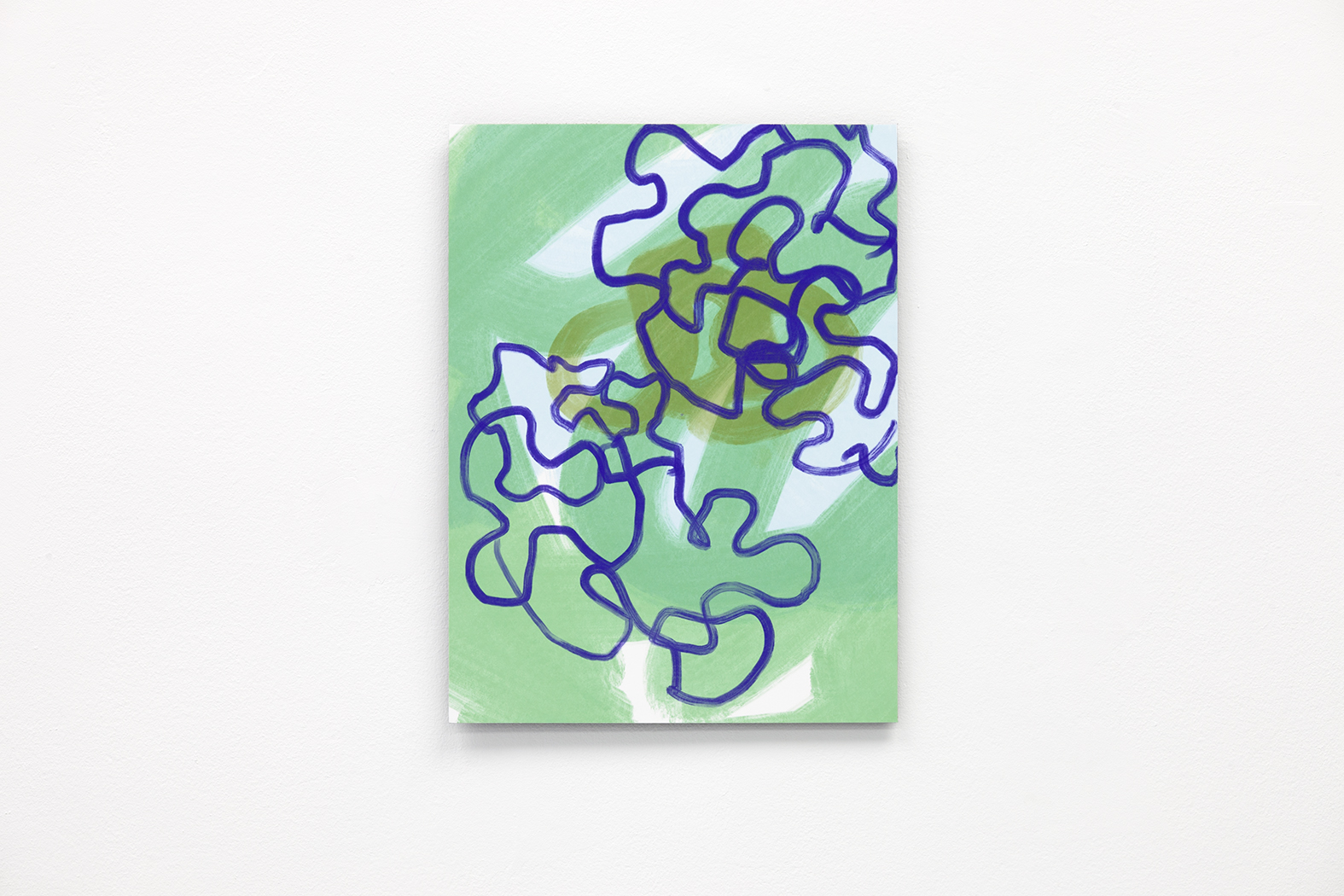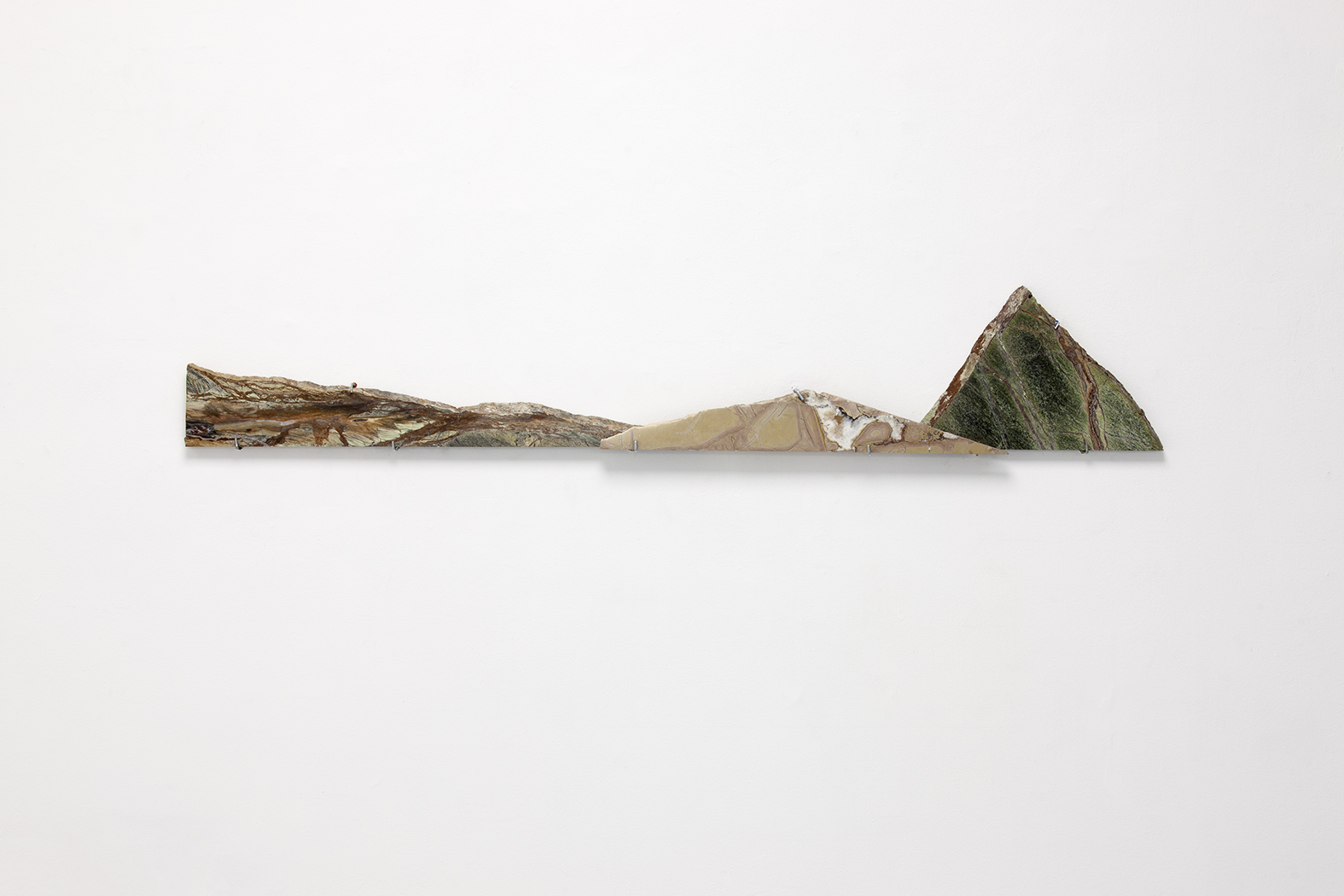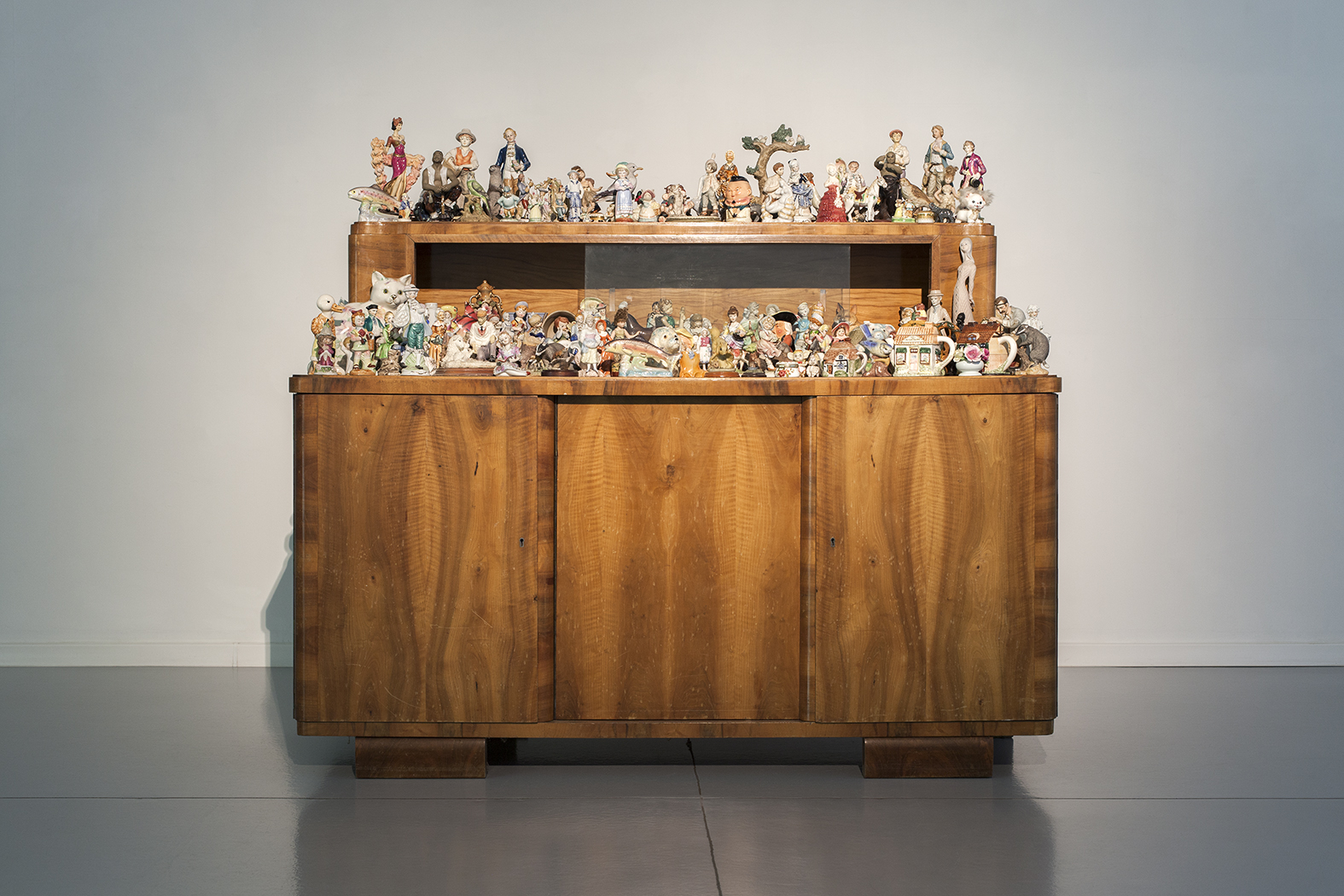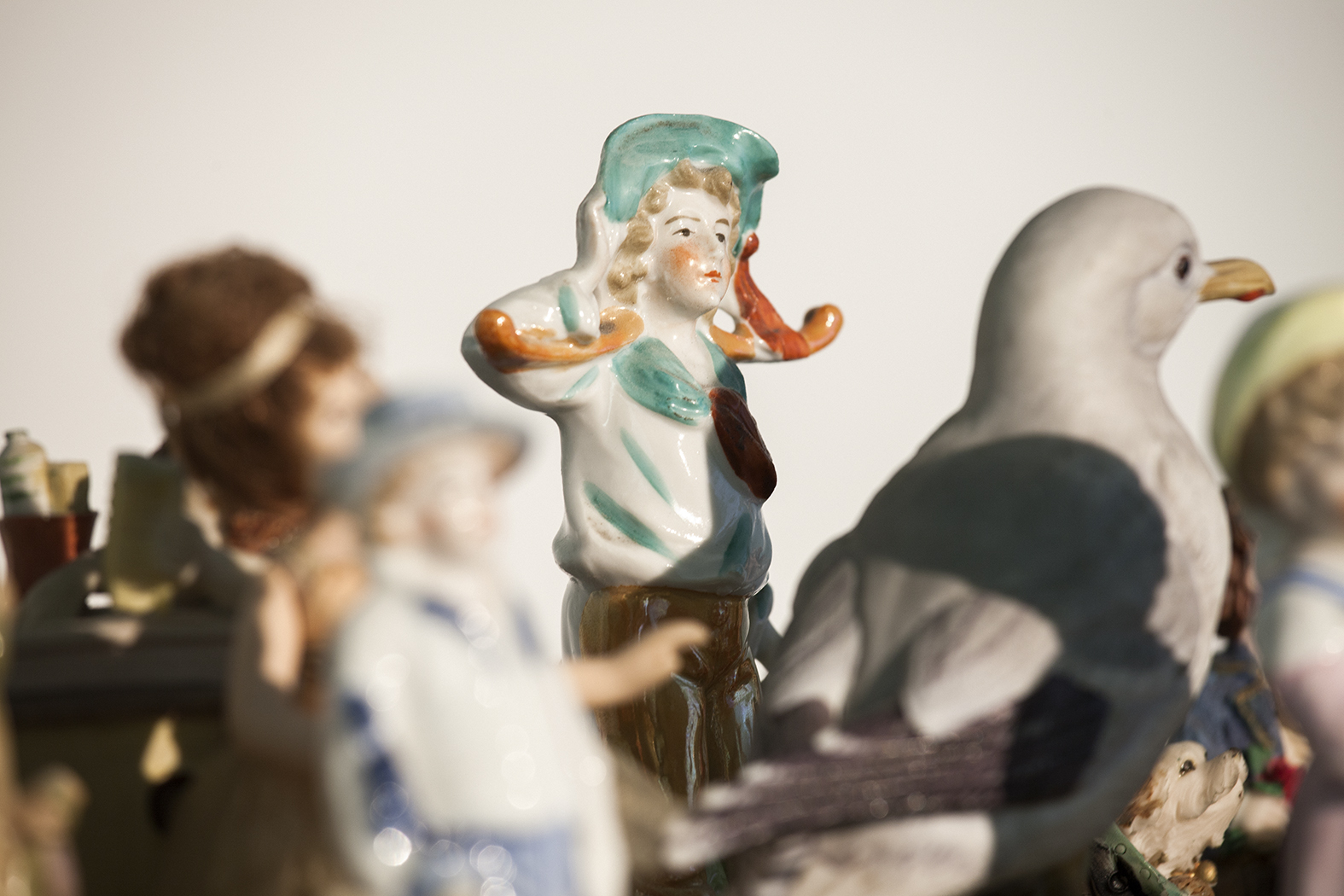Artist: Kornelia Dzikowska
Title: Notes on the passage of time
Curator: Magdalena Adameczek
Venue: BWA – Municipal Art Gallery of Bydgoszcz, Bydgoszcz, Poland
Photo: Maciej Landsberg, all images copyright and courtesy of the gallery, BWA – Municipal Art Gallery of Bydgoszcz, Bydgoszcz, Poland
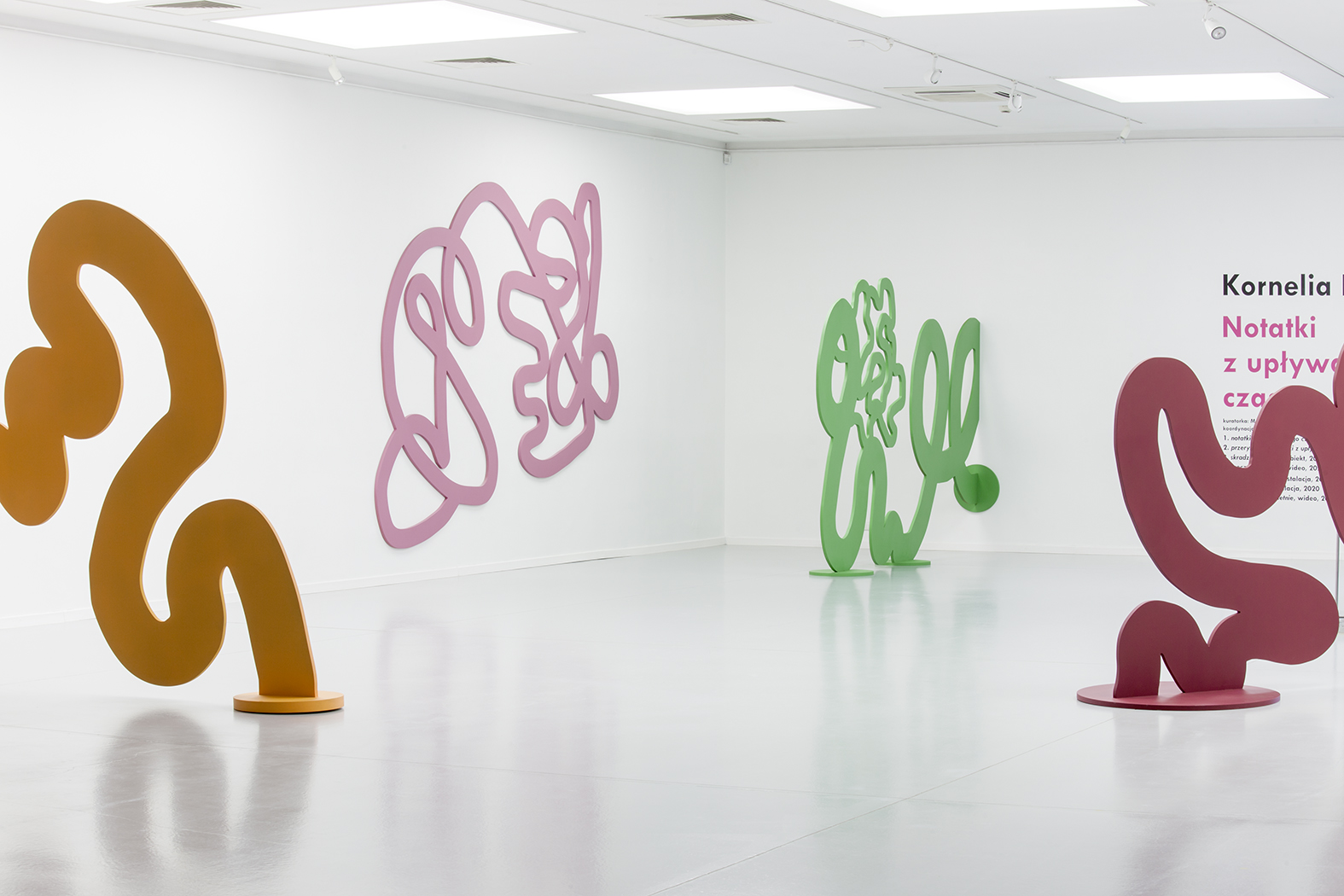
I
In the experience of “time” running out, there is nothing magical or unusual. It is an instant, a mundane moment — the pain of the present. In theory and practice, this applies, without exception, to each one of us. Exactly this — seemingly banal — topic inspired Kornelia Dzikowska and became the starting point of her solo exhibition at the Municipal Gallery bwa in Bydgoszcz.
With a series of digital drawings entitled Notes on the passage of time, created at the turn of 2019 and 2020, the artist introduces the viewer to a “game” full of metaphors and understatements. She encourages us to go beyond the schematic framework of interpretation and to face up to the problem of the passage of time.
The year 2020 enhances the experience of mundane everyday life. Positioned as a time of “great change” — considered by many as a turning point, from which we will never again be able to return to the everyday life we know. It is difficult to assess and determine what processes this change entails. However, it is certain that they will be significant and will have an undeniable impact on the area of contemporary art. This moment has become a turning point which significantly influenced the final shape of this exhibition.
II
The creation of Dzikowska’s works, which mutually correlate, was a process where the foundation was Pamela M. Lee’s publication Chronophobia: on time in the art of the 1960s. Concerning art, Lee, as a pioneer, applies the term “chronophobia”. In her work, the author defines the title phobia as a record of almost obsessive anxiety about time and its measure. It assumes that there is a fine line between a phobic obsession with time and an almost perverse fascination with its development.
The concept of “chronophobia” appears to be enigmatic and unknown. Simply speaking, it means fear of time running out, which we cannot stop. It is also a purely medical term, which perceives this kind of phobia as a disease entity, characterized by symptoms such as panic or anxiety. The disease is also known as “prison neurosis” and is one of the most frequently diagnosed anxiety disorders in prison.
Lee refers to the 1960s and links the birth of chronophobic fear with the emergence of new communication and information technologies. She connects the obsession with time in the art of the 1960s with the inextricable changes in culture that were to take place acer World War II. She explains this, on the one hand, with the supposed disappearance of the “machine age,” on the other hand, with the rapid advent of computer technologies . She treats the 1960s as a kind of historical prelude to our contem 3 porary fixations on time in digital 21st-century culture.
III
In Dzikowska’s works, we can find traces of the so-called “liquid identity,” where an object receives the status of “unstable” and thus becomes a kind of combination of time and space. Each of the works refers in a completely different way to the relation of temporality, where the so-called chronophobic aspect becomes interpretative, allowing to see the work in a new context.
She also analyses the status of the sculpture and the way it is represented. In this context, it can be seen as placed in an “expanded field” , where an object is freed from a 4 particular place, time and context. The artist herself is guided by an autoreflective approach to the medium. Her arrangements are variable and cannot be enclosed in the classic art history classification as a sculpture. She intertwines haptic and optical elements acutely, implying a peculiar combination of complex meanings — forcing the recipient to reach beyond the schematic frame of identification.
IV
The present time as such is seen primarily in the context of modernity as something negative, as something to be overcome in the name of the future, something that slows down our projects, something that delays the arrival of the future.
The contemporary times consist of doubts, hesitation, uncertainty, indecision — of the need for longer reflection, delay. We want to postpone our decisions and actions to have more time for analysis, reflection and consideration. And that is what the contemporary times are — an extended and even potentially infinite period of delay.
Boris Groys — Comrades of Time
